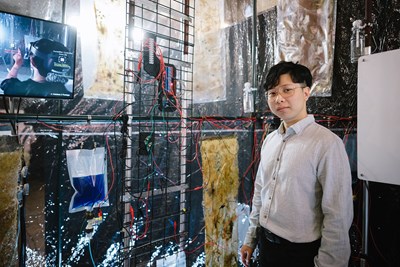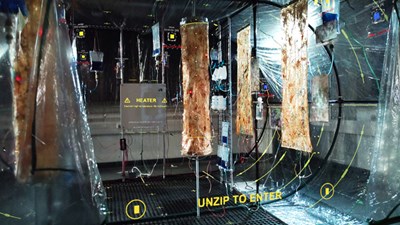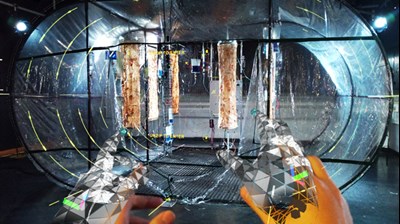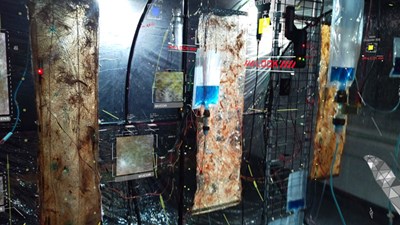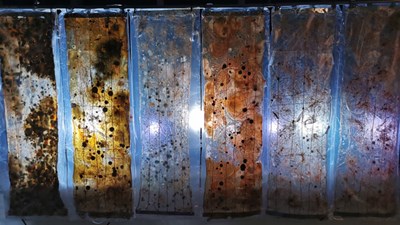Jacky Ziyi Zheng from Te Whare Wānanga o Tāmaki Makaurau (The University of Auckland) – School of Architecture and Planning was a finalist in the Te Kāhui Whaihanga Resene 2020 Student Design Awards for his project 'CyberBio Architecture'.
Project description
CyberBio Architecture is a mixed-reality installation to explore and test the design of interactive biological materials and environments. Underpinning this are the concepts of Extended Reality, Hybrid Systems and Digital Matter, which are investigated in the context of living architecture. The aim of the setup is to establish an interconnection between human behaviours and living material. The digital world shifts beyond being a pure technical interface towards the reconnection of the physical world. This installation uses a variety of technological components to allow for direct human-to-material interaction.
This project situates itself in between the realms of science, technology and design. It is an applied experimentation at a 1:1 scale to create a functional CyberBio architectural system. In this system, biological matter and digital information are actively interlinked through AR headsets, environmental sensors and diverse actuators. The bio-material in this project is embedded in the living material life-cycle of growth and decay - in this instance, algae. It requires the user to look after and care for it over time. In this sense, the architecture becomes like a pet, adapting and changing with the user. Exemplary parameters of this interaction are demonstrated in this installation, including moisturising, feeding, petting and talking to the living material. The manipulation of organic mediums along with live data information point towards a new form of architecture: one which is living and growing among us.
Judges' citation
This project conflates high-end advanced technological systems with a low-tech kiwi #8 wire’ fabrication sensibility to create a prototype for an extended reality environment that allows us to read, activate, interact and receive feedback from sensored biological material. While this was a cerebrally challenging project for the digital dinosaurs in the room, the humane aspects of this project made it delightful to engage with, explore and learn from under Jacky’s engaging and compelling guidance. The opportunities for further architectural application of this sophisticated system are mind-boggling.




